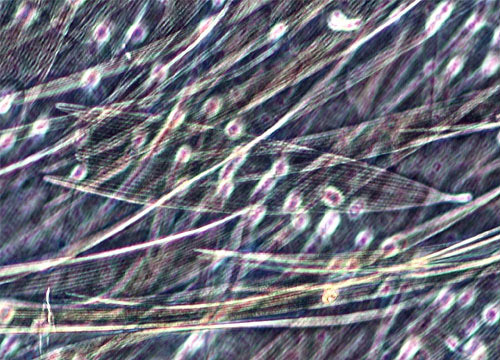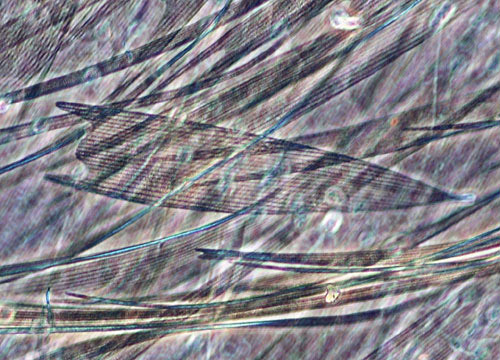Luna Moth Wing Scales
Due to their striking beauty, luna moths are often reared in captivity. They are an integral part of the lucrative lepidopteran trade, and dried adults, live eggs, larvae, and pupae are often sold for profit. Unfortunately for collectors, however, this species is not as vibrant in death as it is in life. Dried specimens fade to a pale yellow, leaving only a faint shadow of what was once a dazzling, luminous green.
 Negative
Negative
 Positive
Positive
Positive
Although fairly common throughout the eastern United States, their nocturnal flying habits and short life span as adults make luna moths a rare find. Luna moths are strong fliers that prefer deciduous hardwood forests, but fare well in urban settings. Indeed, sometimes a careful observer can catch a glimpse of a male luna moth circling a city lamppost very late at night. Females are less often seen than their male counterparts because they do not fly until after mating and usually emerge later. Adults only live for about a week and do not eat during that time. Adult luna moths have no functional mouthparts and must survive solely on the energy stores gained in their larval stage, as they strive to reproduce successfully.
Negative
Due to their striking beauty, luna moths are often reared in captivity. They are an integral part of the lucrative lepidopteran trade, and dried adults, live eggs, larvae, and pupae are often sold for profit. Unfortunately for collectors, however, this species is not as vibrant in death as it is in life. Dried specimens fade to a pale yellow, leaving only a faint shadow of what was once a dazzling, luminous green.















